|
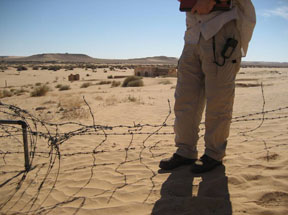
In Tunisia, wind has added up to a meter of sand over parts of a minefield, nearly topping an old barbed wire fence.
|
Soil Type
Landmines can shift placement in soil over time and due to weather conditions; soil type can also pose a challenge to landmine detection and
clearance.
- Sand: Wind can shift sands dramatically, and the fine grit of sandy soils can rapidly wear equipment.
- Hard or Rocky Soil: Excavating and sifting of soil for mine-size objects is more difficult in hard clay soil or rocky areas.
- Laterite: Some soils have high mineral content that interferes with standard detection equipment.
|
|
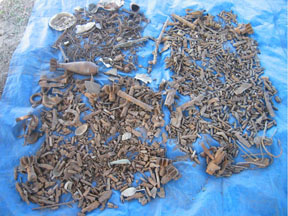
Picture 1: Clutter may include farming and household implements, wire, bullets and casings, remnants of explosive devices.
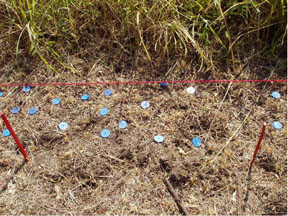
Picture 2: Investigating and removing all metal from a minefield to ensure the area is free from mines can be a daunting task in the minefields of Cambodia, where as many as 350 pieces of clutter are identified for every mine found.
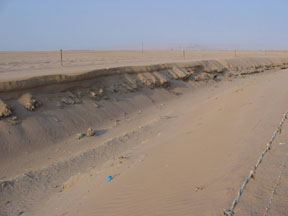
Picture 3: Gully in Chile, patterned mine fields washed out to sea via this gully. An unknown number of AT and AP mines that have been exposed to 30 years of weather lie in all orientations at unknown depths in the sand. Fine sand and dust presents a further challenge to mechanical mine clearance.
|
Orientation
Landmines are designed with placement and orientation in mind; however, misguided or inventive users may turn them upside down, sideways, etc., and thereby require modified demining operations. Shifting over time may also occur.
Type/Degradation
There are hundreds of landmine types, and many more copies and improvised mines. Mines can have metal, plastic, wood, or even football casings. Casings and components can degrade over time, altering their detection signature and creating uncertainty as to how mines will stand up to clearance.
Clutter
Minefields, especially in former battlefield or populated areas, can have a high number of metallic and other objects in the soil.
Pattern/non-patterned
Minefields can be organized in a pattern, which makes for easier removal and accountability; or have random placement.
Records
The exact location of minefields and placement of mines are rarely well recorded. Along conflict borders, new minefields may overlap old, and landmines may be deliberately reused and moved by the original or a new party.
Newly suspect areas are regularly identified by local residents. For those with records, old reference points (fence, stake, tree or structure) may be obsolete, and modern GPS coordinates must be mapped. In some areas, groups or locals have reclaimed and reused landmines.
Depth
Deeply buried mines (>30 cm) are difficult to detect by conventional methods, and may even be missed by clearance equipment.
|
|
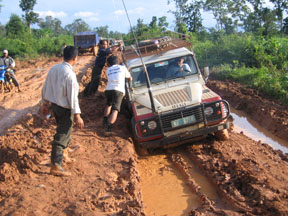
Roads can become impassable for personnel and equipment in Southeast Asia's rainy season.
Below, a makeshift bridge in Southeast
Asia.
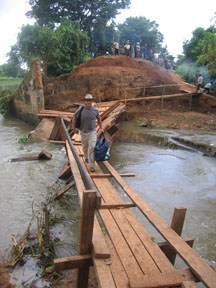
|
Remote Locations
Many minefields are remote; the most remote are accessible only
by helicopter, posing logistical challenges for personnel, equipment
and supplies transport.
Roads and Bridges
Roads and waterways may be impassable (totally or for vehicles
over a certain weight) due to poor condition, rain or seasonal
weather.
Materials Handling Equipment
In addition to road and bridge infrastructure, the limitations of
local vehicles and cranes affect the selection of equipment and
method of transport. Almost universally two - 20 ft ISO containers
are more manageable than a 40 ft ISO container.
|

